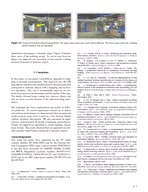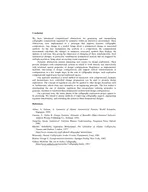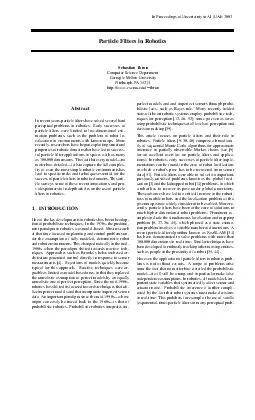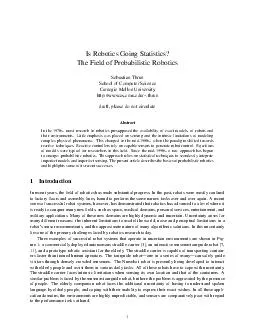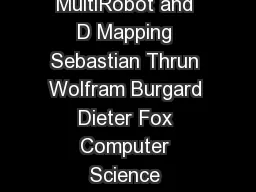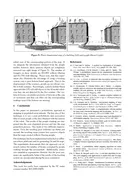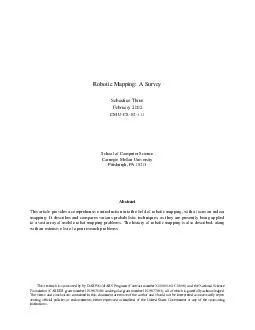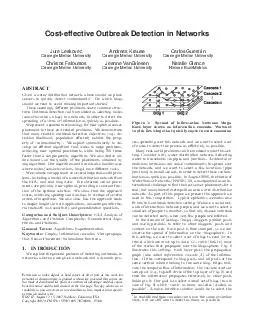PDF-Map Building with Mobile Robots in Dynamic Environments Dirk H ahnel Rudolph Triebel Wolfram
Author : jane-oiler | Published Date : 2014-12-12
Most of the techniques developed so far have been designed for situations in which the environment is static during the mapping process Dynamic objects however can
Presentation Embed Code
Download Presentation
Download Presentation The PPT/PDF document "Map Building with Mobile Robots in Dynam..." is the property of its rightful owner. Permission is granted to download and print the materials on this website for personal, non-commercial use only, and to display it on your personal computer provided you do not modify the materials and that you retain all copyright notices contained in the materials. By downloading content from our website, you accept the terms of this agreement.
Map Building with Mobile Robots in Dynamic Environments Dirk H ahnel Rudolph Triebel Wolfram: Transcript
Download Rules Of Document
"Map Building with Mobile Robots in Dynamic Environments Dirk H ahnel Rudolph Triebel Wolfram"The content belongs to its owner. You may download and print it for personal use, without modification, and keep all copyright notices. By downloading, you agree to these terms.
Related Documents

